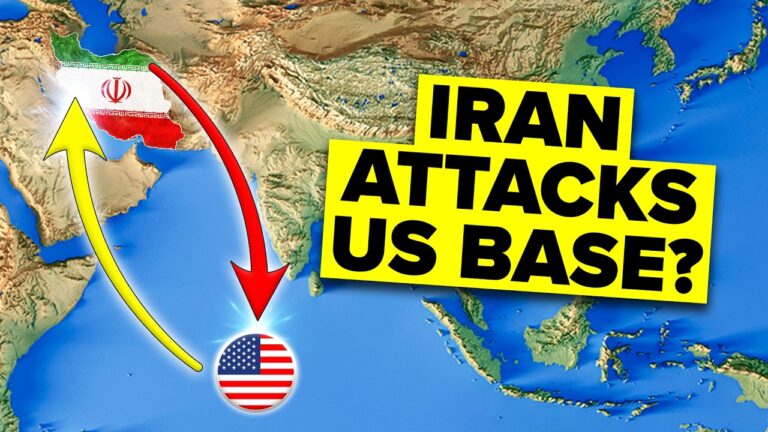Video at the bottom!
In the current geopolitical climate, tensions between the U.S. and Iran are escalating. U.S. President Donald Trump has strategically placed B-2 Spirit stealth bombers on Diego Garcia, a remote island in the Indian Ocean, signaling a potential military action against Iran. In response, Iranian officials have announced intentions to target U.S. military bases, framing it as a pre-emptive strike. However, Iran’s capability to launch an effective assault on such a distant target remains questionable.
The backdrop of this confrontation comes from Trump’s outreach to Iran to negotiate over its nuclear program, which Iran has persistently pursued to bolster its regional influence. Despite enriching uranium significantly, Tehran’s refusal to cooperate with the Joint Comprehensive Plan of Action (JCPOA) has compounded tensions, especially after the U.S. exited the agreement during Trump’s presidency. The re-imposition of sanctions has negatively impacted Iran’s economy but has not stalled its nuclear ambitions.
Trump’s recent threats include the possibility of bombings should Iran not comply with demands for direct talks—something Iran’s leadership has categorically rejected, although they have expressed willingness for indirect negotiations. This impasse has led to a military buildup on Diego Garcia, raising alarms in Tehran.
Iranian military officials have warned that any base used to support attacks against Iran will be targeted, with recent statements indicating a shift in focus toward launching a pre-emptive strike on Diego Garcia itself. The island’s strategic importance stems from its history as a launch point for U.S. military operations in the Middle East, which has made it a source of concern for Iran.
Despite boasting various missile and drone capabilities, Iran’s ability to effectively strike Diego Garcia is limited. The Khorramshahr-4 missile, despite being highlighted as a potential asset, falls short of the necessary range to reach the island directly. Meanwhile, the Shahed 136B drones could technically make it, but their slower speeds make them vulnerable to interception.
Iran’s conventional military forces face challenges as well. Its air force, largely outdated, lacks the modern capabilities needed to contend with advanced U.S. aerial technology. Naval options are equally constrained, lacking the capacity to deliver an effective strike without substantial vulnerability.
While Iran’s rhetoric suggests readiness for a military response, the realities of its military capabilities may hinder any substantial action against U.S. forces stationed at Diego Garcia. The threat level is high, but Iran may find it difficult to execute a credible pre-emptive strike without exposing its limitations.
In summary, while the situation remains tense, Iran’s actual capacity to carry out its threats against Diego Garcia or U.S. forces in the region may be overstated. The U.S. military remains prepared, and any escalation could trigger a robust response. How this situation unfolds will depend on diplomatic maneuvers and military posturing in the coming days and weeks.


